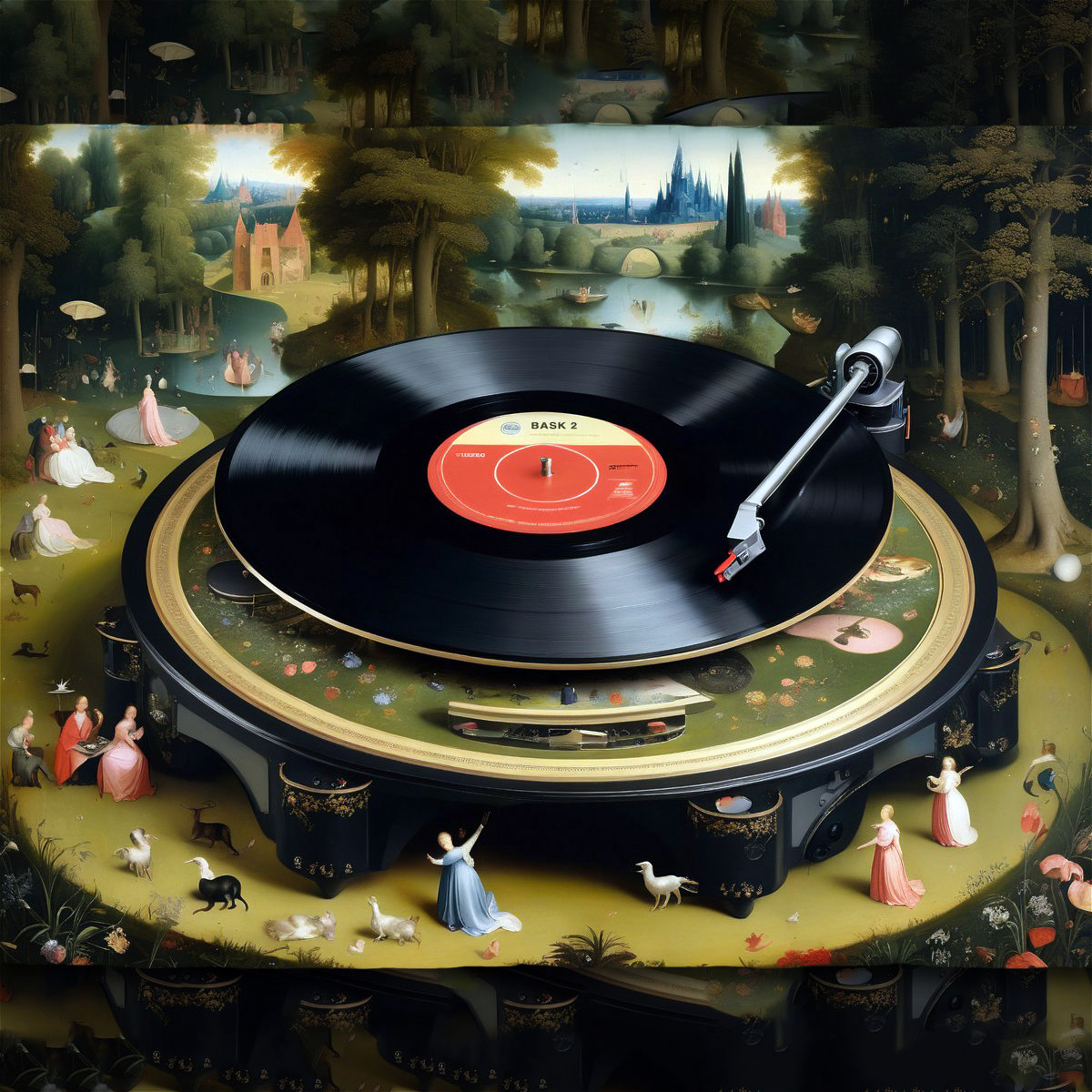CD Reviews
MIKE KENEALLY & MARCELO RADULOVICH

BASK 2 is the fifth album by the collaboration of composers Mike Keneally and Marcelo Radulovich, a follow up from their previously released BASK 1. It’s a continuation of their stretching tonal boundaries with an onslaught of polytonality, haunting spoken choruses in both English and Spanish, weaving in and out of consonance and dissonance moments played on an astounding array of musical instruments.
On that note, Keneally plays guitar, piano, synth, bass, percussion, vocals, and Radulovich plays synth bass, synth, electronics, melodica, drum machine, drums, percussion, bass, radio, saxophone, and vocals. All the music was composed by Keneally and Radulovich, with “1 2 3 4 5 6 7” by Keneally, Radulovich, and drummer Bill Ray.
The 11-track project was recorded and produced by Radulovich, Keneally, and Ray and mixed and mastered by Radulovich at Titicacaman Studio in Encinitas, California.
It’s not the best choice for background music with dinner guests over or for the many with short attention spans, but a gem for those who want to be mesmerized by the anticipation of what creative interplay of instruments and voices come out of the woodwork on most of the tracks.
There aren’t any flaming guitar solos nor distinctive bridges, but long extensive compositional vamps that set the foundation for the presence of the unexpected interjection of sonar surprises. For compositional aficionados who may prefer the likes of Berlioz, Shostakovich, or Varese, they’ll be pleased to hear the many unique blends of non-diatonic tonalities criss-crossing the foundation of each track.
The inclusion of Bill Ray on drums adds a rhythmic personality to the project on six of the tracks, where he bounces around his kit with sweeping syncopation à la Mitch Mitchell and Billy Cobham, particularly on “1,2,3,4,5,6,7,” and “Paul McCartney on Hash, London, Winter 1965,” as well as laying down the funk on “Canta Karia” and on the funky rap track, “Sycamore Tree.”
Most of the lyrical tracks are pleasant pop blueprints with smooth vocal melodies and harmonies that may remind one of certain Steely Dan tunes. It’s the mostly non-diatonic intermittent orchestral flurries that make each composition distinctive and unique, all beautifully mixed and mastered to perfection.
The dreamy instrumental “Organism,” and groove instrumental “Chupacabras” both place the instrumental interplay front and center with the closing track, “Paul McCartney on Hash, London, Winter 1965,” taking us on a final trip, in a somewhat “Magical Mystery Tour” fashion accompanied by heavenly vocal choruses.
The album will certainly require second and third listens to capture all the wonderfully placed orchestrations, interludes, and tonic surprises throughout that will capture your imagination and feed your soul.





